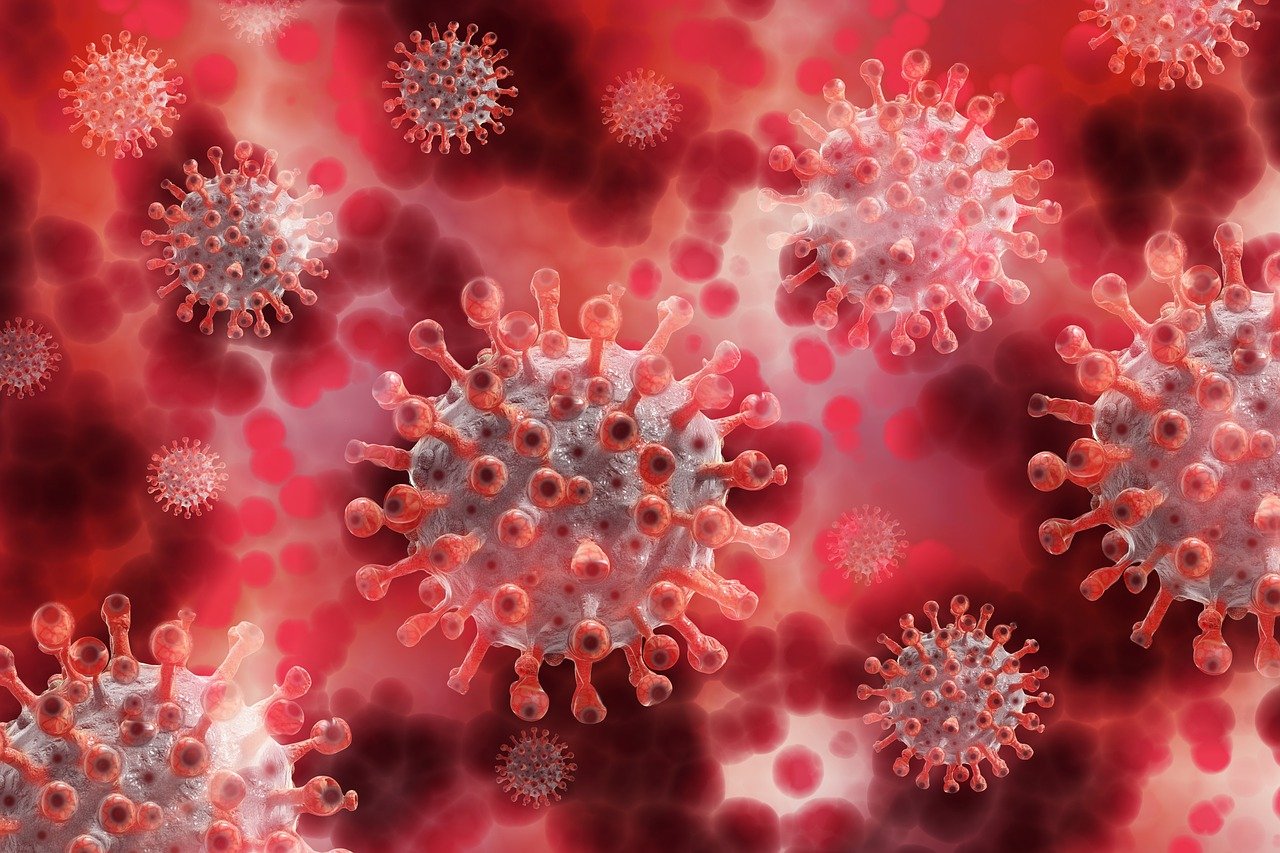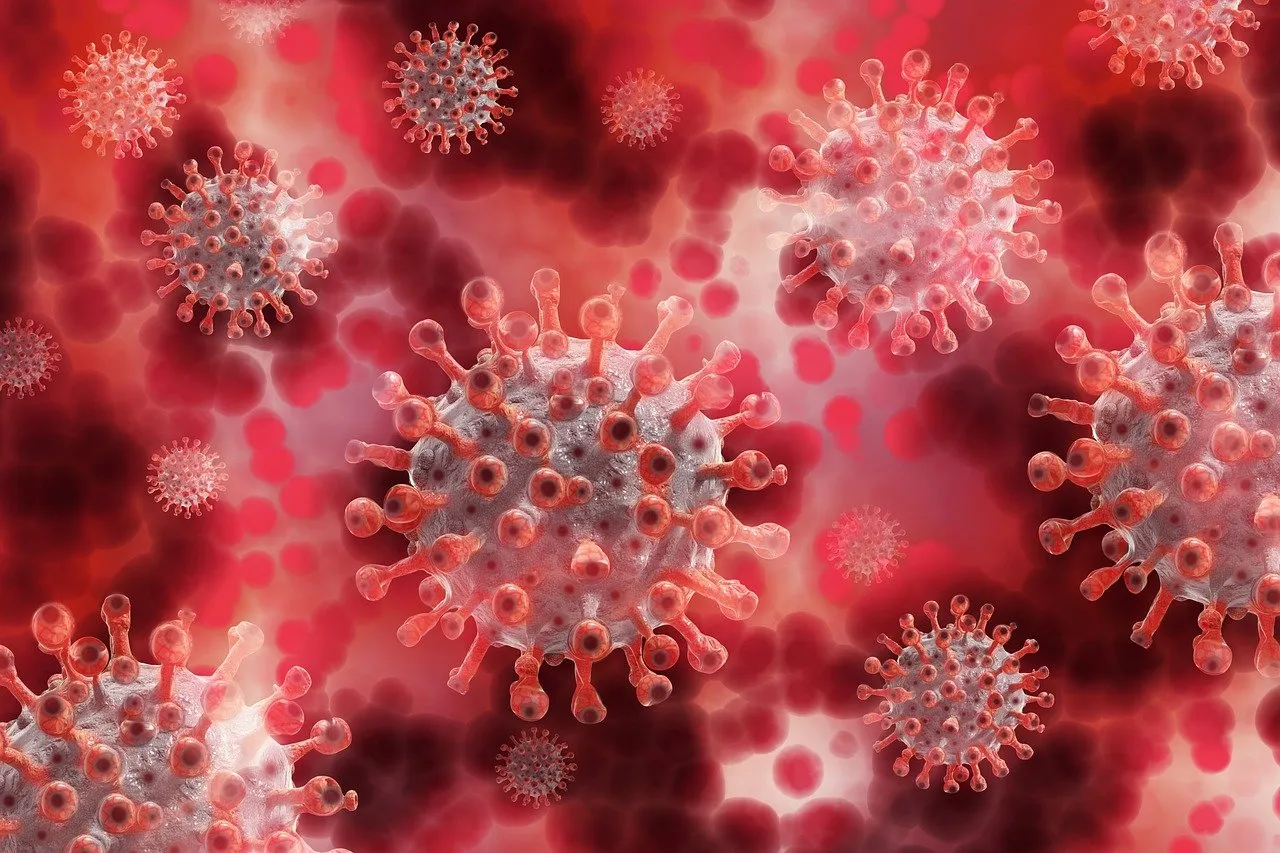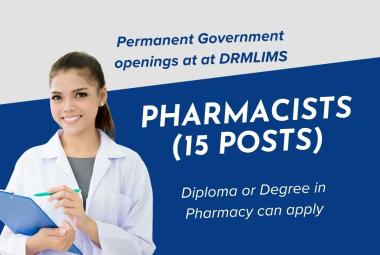
About Authors
Manish Pal Singh1* and Sidhraj Singh Sisodia2
1 Department of Pharmacology, Agra Public Pharmacy College, Agra, Uttar Pradesh, India
2 Faculty of Pharmacy, Bhupal Nobles University, Udaipur, Rajasthan, India
*manish_bn@yahoo.co.in
ABSTRACT
Diabetes is a chronic metabolic condition that causes high glucose levels. In common, infectious diseases, for example, COVID-19 are progressively genuine in individuals with diabetes. We aim to briefly review the general risk factors of diabetic patients during COVID-19 infections because hyperglycemia may adversely affect pulmonary function and immune response. There are numerous reasons why COVID-19 patients may have more regrettable glycemic control or be at higher risk than there, they were in their pre-Covid-19 state. We propose different hazard factors alongside potential solutions for diabetes patients with COVID-19, which can build the danger of poor outcomes. Suggestions are made on the conceivable pathological mechanisms of the connection among diabetes and COVID-19, and its management. No positive ends can be made dependent on current restricted proof. Further research with respect to this relationship and its clinical administration is justified and also it has been approaches to patho-physiological studies are needed to establish more details.
INTRODUCTION
Diabetes Mellitus (DM) is one of the most severe, incurable metabolic disorders characterized by hyperglycemia resulting from defects in insulin secretion, insulin action or both (Manik et al., 2013). To control DM Interventions to promote and support healthy lifestyles, including healthy diet, physical activity, avoidance of tobacco use and harmful use of alcohol. Medication for blood glucose control insulin or oral hypoglycemic agents as required. Regular exams for early detection of complications: comprehensive eye examination, measurement of urine protein, and assessment of feet for signs of neuropathy (Roy et al., 2012).
COVID-19 (Coronavirus Infection 2019) is brought about by the corona virus SARS-CoV-2 (severe acute respiratory syndrome coronavirus-2), which has spread rapidly to in excess of 160 nations over the world (Del and Malani, 2020). The COVID-19 disease is a more challenge for individuals with diabetes. Diabetes has been accounted for to be a hazard factor for the severity of the disorder and simultaneously patients need to control glucose in a circumstance with a diminished and progressively factor food admission (Yang et al., 2020). Also the viral infections can contaminate pancreatic β-cells with subsequent impacts running from functional harm to cell necrosis. A few physiological mechanisms have been proposed for viral infections in activating immune system β- cell pulverization or functional β- cell destruction. Galleri et al., have been supported the evidence of the correlation between viral infections and Type-1 diabetes mellitus pathogenesis (Galleri et al., 2013).
The principle aim of this short review to attempt know about the risk factors of diabetic patients in COVID-19 infection, additionally here to seek treatment approaches for avoidance of disease to specific patient.
RISK FACTORS OF DIABETIC PATIENT IN COVID-19 INFECTION
Diabetes is a risk factor for hospitalization and mortality of the COVID-19 infection. Because they influence COVID-19 viral infection, hyperglycemia may adversely influence pulmonary capacity and immune reaction (Hill et al., 2020). When contrasting escalated care and non-serious consideration patients with COVID-19, there gives off an impression of being a twofold increment in the frequency of patients in specifically consideration having diabetes (Li et al., 2020). In this reference also, people with diabetes are a high-risk group for severe disease.
Diabetes patients have immune-response to disease both corresponding to cytokine profile and to changes in immune-response including T-cell and macrophage initiation. Hyperglycemia in diabetes is thought to cause impaired of the immune reaction, which brings about inability to control the spread of attacking pathogens in diabetic subjects (Ferlita et al., 2019). Numerous patients with type 2 diabetes are obese and weight is likewise a risk factor for serious infection. The immune system reaction to aggravation prompts fat cells being not able to react well to insulin and sees the fat cells secreting fatty acids into the blood, prompting higher than ordinary levels of cholesterol. The impaired secretion of adipokines and cytokines like TNF-α and interferon characterise a chronic low-grade in abdominal obesity and may induce an iniciated immune-response (Huttunen and Syrjänen, 2013; Honce and Schultz, 2019). Individuals with serious abdominal obesity additionally have mechanical respiratory issues, with decreased ventilation of the basal lung segments expanding the risk of pneumonia just as diminished oxygen saturation of blood. Obese patient additionally have an expanded asthma chance, and those patients with obesity and asthma have more side effects, increasingly visit and extreme exacerbations and diminished reaction to several asthma medications (Dixon and Peters, 2018). The most incessant comorbidities to COVID 19 are hypertension and diabetes. Human pathogenic corona viruses (serious intense respiratory condition coronavirus [SARS-CoV] and SARSCoV-2) attach to their objective cells through angiotensin-converting enzymes 2 (ACE2), which is denoted by epithelial cells of the lung, digestive system, kidney, and vascular system. The expression of ACE2 is considerably expanded in patients with type 1 or type 2 diabetes, who are treated with ACE inhibitors and angiotensin II type-I receptor blockers (ARBs). Subsequently, the expanded expression of ACE2 would encourage infection with COVID-19 (Wan et al., 2020; Hoffmann et al., 2020; Li et al., 2017). In conclusion, chronic diabetic manifestations, for example, diabetic kidney disease (DKD) and ischemic heart disease may entangle the circumstance for individuals with diabetes, making them susceptible and further expanding the severity of COVID-19 infection and the requirement for care, for example, intense dialysis. A few studies result demonstrate that COVID-19 could cause intense cardiovascular injury with cardiovascular dysfunction, to deterioration of circulation (Cheng et al., 2020). Until this point in time, the genuine proof is unknown in regards to an direct process of kidney contribution in COVID-19. However, components including a cytokine storm disorder through sepsis pathways or direct viral renal tubular cells injury have been accounted for it (Naicker et al., 2020). At present, the expression of renal damage in COVID-19 patients has all the earmarks of being intense; in any case, a few instances of macro albuminuria / proteinuria and additionally haematuria might be related with the endothelial dysfunction observed in these patients (Li et al., 2020).
TREATMENT APPROACHES FOR DIABETIC PATIENT IN COVID 19 INFECTIONS
Imbalance glycaemic regulation is a hazard factor for risky diseases and unwanted results. Be that as it may, the converse is additionally evident and the danger of disease, including bacterial pneumonia, can be diminished through acceptable glycaemic control (Critchley et al., 2018). One Chinese meta-examination including 1527 patients indicated that the most common cardiovascular metabolic comorbidities with COVID-19 were hypertension (17.1%, 95% CI 9.9 - 24.4%) and cardio-cerebrovascular infection (16.4%, 95% CI 6.6 - 26.1%), trailed by diabetes (9.7%, 95% CI 6.9 - 12.5%) (Li et al., 2020). Patients with COVID-19 normally appear on confirmation lymphocytopenia, and to a lesser degree thrombocytopenia and leukopenia, which are increasingly noticeable among those with extreme infection. In type 2 diabetes mellitus, other than the marked inflammatory process recently talked about, an disbalance among coagulation and fibrinolysis happens, with expanded degrees of clotting variables and relative restraint of the fibrinolytic network. Both insulin resistance and type 2 diabetes mellitus are related with endothelial disturbance, and upgraded platelet accumulation and activation (Guan et al., 2020; Zhou et al., 2020; Dunn and Grant, 2005).
Vulnerability to hyperglycemia from corticosteroid treatment. This treatment raises glucose levels in 80% of patients with diabetes and in numerous patients without diabetes,which could build mortality chance in coronavirus diseases. A Chinese report looked at 39 SARS-CoV patients without past diabetes, who didn't get steroid treatment, with 39 coordinated healthy siblings and demonstrated that 20 of the 39 SARS-CoV patients initiate diabetes during hospitalization (Yang et al., 2010; Yang et al., 2006). In the event that corticosteroids are important, at that point glucose levels should be considered with vigorously to keep up close euglycemia planned for keeping up ideal pneumonic and immunologic capacity. It has been demonstrated that dipeptidyl peptidase-4 (DPP-4) is the essential receptor of MERS-CoV. Since DPP-4 inhibitors are normally applied in the treatment of diabetes around the world, future research should be investigate whether DPP-4 may likewise go about as receptor for SARS-CoV-2, consequently adding to a potential defensive impact of these medications against COVID-19 (Song et al., 2019; Fadini et al., 2020; Gentile et al., 2020). Inappropriate discontinuation of an angiotensin receptor blocker or an angiotensin converting enzyme inhibitor. SARS-CoV infection and the virus Spike protein diminish ACE2 expression. Mice infused with SARS-CoV Spike introduced intensified intense lung failure, which could be weakened by obstructing the renin-angiotensin pathway. A recent review of Renin-Angiotensin-Aldosterone System Inhibitors in patients with Covid-19 recommended that to avoid excess cardiovascular risk, these drugs should be continued in patients at risk for or are being evaluated for COVID-19 (Vaduganathan et al., 2020; Gurwitz, 2020; Kuba et al., 2005).
Up until this point, no anti-SARS-CoV-2 medication or vaccine has been authoritatively affirmed for COVID-19 treatment. A few clinical preliminaries are in progress to survey the security and viability of potential treatment options, including remdesivir, tocilizumab, lopinavir/ritonavir, ribavirin, interferon, chloroquine phosphate, arbidol, among others (WHO, 2020; Wang et al., 2020). Then again, a few investigations have announced that hydroxychloroquine improves glycemic control in decompensated, treatment-unmanageable patients with diabetes.Although inflammation is related with impaired glucose control, the basic system of hydroxychloroquine's hypoglycemic impact remains unclear.It has been portrayed that chloroquine expands the C peptide response, conceivably reflecting an improved pancreatic β-cell function.Reduced intracellular insulin degradation and expanded insulin accumulation have also been recognized as potential impacts of hydroxychloroquine in animals models (Rekedal et al., 2010; Emami et al., 1998). No information is accessible in regards to the most fitting administration of patients with diabetes affected by SARS-CoV-2, just as patients with COVID-19 who create glycemic decompensation. Thorough glucose observation and cautious thought of medication collaborations may weaken intensifying of side effects and adverse outcomes.A multidisciplinary group approach, including infectologists, endocrinologists, pulmonologists, therapists, nutritionists and exercise rehabilitation specialists might be vital during the drawn out hospitalization time frames and recovery.Special consideration should be be paid to those with diabetic nephropathy, or diabetes-related heart intricacies, since they are additionally at higher risk for severe COVID-19 and death (Zhang et al., 2020).
Taken every single together, patients with diabetes are a high-risk and entangled group of patients to treat for COVID19, with an expanded necessity of hospitalization. Patients with diabetes need escalated consideration regarding to reduce the risk of fatalities. Patients with diabetes should be follow the general prevention guidance given by the specialists altogether to keep away from contamination with COVID-19.Finally, expanded observation and testing in outpatient diabetes centers for COVID-19, just as lower limits for hospitalization of these patients may positively impact their results
CONCLUSION
More investigations should be done to comprehend the risks and advantages of generally utilized diabetes drugs in patients with serious coronavirus infections. Individuals with diabetes are at increased risk for bacterial, parasitic and viral infections. Diabetes and different comorbidities are significantly indicators of bleakness and mortality in patients with COVID-19. Routine diabetes care will be essentially affected during the pandemic.Guidelines are accessible for triaging care, which by and large prescribe some earnest up close and personal facilities proceeding with routine check-ups and care of very much controlled diabetes be conceded, and different administrations gave by remote methods where conceivable.
REFERENCES
1. Cheng, Y., Luo, R., Wang, K., Zhang, M., Wang, Z., Dong, L., Li, J., Yao, Y., Ge, S. and Xu, G., (2020); Kidney disease is associated with in-hospital death of patients with COVID-19; Kidney Int.; 97(5); 829-838.
2. Critchley, J.A., Carey, I.M., Harris, T., DeWilde, S., Hosking, F.J. and Cook, D.G., (2018); Glycemic control and risk of infections among people with type 1 or type 2 diabetes in a large primary care cohort study; Diabetes care; 41(10); 2127-2135.
3. Del Rio, C. and Malani, P.N., (2020); COVID-19-new insights on a rapidly changing epidemic; Jama; 323(14); 1339-1340.
4. Dixon, A.E. and Peters, U., (2018); The effect of obesity on lung function; Expert Rev Respir Med.; 12(9); 755-767.
5. Dunn, E.J. and Grant, P.J., (2005); Type 2 diabetes: an atherothrombotic syndrome; Curr Mol Med; 5(3);323-332.
6. Emami, J., Pasutto, F.M., Mercer, J.R. and Jamali, F., (1998); Inhibition of insulin metabolism by hydroxychloroquine and its enantiomers in cytosolic fraction of liver homogenates from healthy and diabetic rats; LIFE SCI; 64(5); 325-335.
7. Fadini, G.P., Morieri, M.L., Longato, E. and Avogaro, A., (2020); Prevalence and impact of diabetes among people infected with SARS-CoV-2; J Endocrinol Invest; 28; 1-3.
8. Ferlita, S., Yegiazaryan, A., Noori, N., Lal, G., Nguyen, T., To, K. and Venketaraman, V., (2019); Type 2 Diabetes Mellitus and Altered Immune System Leading to Susceptibility to Pathogens, Especially Mycobacterium tuberculosis; J Clin Med; 8(12); 2219.
9. Galleri, L., Sebastiani, G., Vendrame, F., Grieco, F.A., Spagnuolo, I. and Dotta, F., (2013), “Viral infections and diabetes”, In Diabetes, Springer, New York, NY, pp. 252-271.
10. Gentile, S., Strollo, F. and Ceriello, A., (2020); COVID-19 infection in Italian people with diabetes: lessons learned for our future (an experience to be used); Diabetes Res Clin Pract., 162.
11. Guan, W.J., Ni, Z.Y., Hu, Y., Liang, W.H., Ou, C.Q., He, J.X., Liu, L., Shan, H., Lei, C.L., Hui, D.S. and Du, B., (2020); Clinical characteristics of coronavirus disease 2019 in China; N Engl J Med.; 382(18);1708-1720.
12. Gurwitz, D., (2020). Angiotensin receptor blockers as tentative SARS?CoV?2 therapeutics; Drug Dev Res; (Article In Press).
13. Hill, M.A., Mantzoros, C. and Sowers, J.R., (2020); Commentary: COVID-19 in patients with diabetes; Metabolism; 24; 107.
14. Hoffmann, M., Kleine-Weber, H., Schroeder, S., Krüger, N., Herrler, T., Erichsen, S., Schiergens, T.S., Herrler, G., Wu, N.H., Nitsche, A. and Müller, M.A., (2020); SARS-CoV-2 cell entry depends on ACE2 and TMPRSS2 and is blocked by a clinically proven protease inhibitor; Cell; 181(2); 271-280.
15. Honce, R.R. and Schultz-Cherry, S., (2019); Impact of obesity on influenza A virus pathogenesis, immune response, and evolution; Front. Immunol.; 10; 1071.
16. Huttunen, R. and Syrjänen, J., (2013); Obesity and the risk and outcome of infection; Int J Obes (Lond); 37(3);333-340.
17. Kuba, K., Imai, Y., Rao, S., Gao, H., Guo, F., Guan, B., Huan, Y., Yang, P., Zhang, Y., Deng, W. and Bao, L., (2005); A crucial role of angiotensin converting enzyme 2 (ACE2) in SARS coronavirus–induced lung injury; Nat Med; 11(8);875-879.
18. Li, B., Yang, J., Zhao, F., Zhi, L., Wang, X., Liu, L., Bi, Z. and Zhao, Y., (2020); Prevalence and impact of cardiovascular metabolic diseases on COVID-19 in China; Clin Res Cardiol.; 109(5); 531-538.
19. Li, X.C., Zhang, J. and Zhuo, J.L., (2017); The vasoprotective axes of the renin-angiotensin system: Physiological relevance and therapeutic implications in cardiovascular, hypertensive and kidney diseases; Pharmacol Res.; 125(Pt A); 21-38.
20. Li, Z., Wu, M., Yao, J., Guo, J., Liao, X., Song, S., Li, J., Duan, G., Zhou, Y., Wu, X. and Zhou, Z., (2020); Caution on kidney dysfunctions of COVID-19 patients;.
21. Manik, S., Gauttam, V. and Kalia, A.N., (2013); Anti-diabetic and antihyperlipidemic effect of allopolyherbal formulation in OGTT and STZ-induced diabetic rat model; Indian J Exp Biol.; 51(9); 702-708.
22. Naicker, S., Yang, C.W., Hwang, S.J., Liu, B.C., Chen, J.H. and Jha, V., (2020); The Novel Coronavirus 2019 epidemic and kidneys; Kidney Int.; 97(5); 824-828.
23. Rekedal, L.R., Massarotti, E., Garg, R., Bhatia, R., Gleeson, T., Lu, B. and Solomon, D.H., (2010); Changes in glycosylated hemoglobin after initiation of hydroxychloroquine or methotrexate treatment in diabetes patients with rheumatic diseases; Arthritis Rheum; 62(12);3569-3573.
24. Roy, M., Tomar, M. and Jindal, R., (2012); Recent advances in the treatment of gestational diabetes; Apollo Medicine; 9(3); 242-245.
25. Song, Z., Xu, Y., Bao, L., Zhang, L., Yu, P., Qu, Y., Zhu, H., Zhao, W., Han, Y. and Qin, C., (2019); From SARS to MERS, thrusting coronaviruses into the spotlight; Viruses; 11(1); 59.
26. Vaduganathan, M., Vardeny, O., Michel, T., McMurray, J.J., Pfeffer, M.A. and Solomon, S.D., (2020); Renin–angiotensin–aldosterone system inhibitors in patients with Covid-19; N Engl J Med; 382(17);1653-1659.
27. Wan, Y., Shang, J., Graham, R., Baric, R.S. and Li, F., (2020); Receptor recognition by the novel coronavirus from Wuhan: an analysis based on decade-long structural studies of SARS coronavirus; J Virol ; 94(7).
28. Wang, M., Cao, R., Zhang, L., Yang, X., Liu, J., Xu, M., Shi, Z., Hu, Z., Zhong, W. and Xiao, G., (2020); Remdesivir and chloroquine effectively inhibit the recently emerged novel coronavirus (2019-nCoV) in vitro; Cell Res.; 30(3);269-271.
29. World Health Organization; Overview of the types/classes of candidate therapeutics (2020); availableat: https://www.who.int/blueprint/prioritydiseases/keyaction/Table_of_therapeutics_Appendix_17022020.pdf?ua=1.
30. Yang, J.K., Feng, Y., Yuan, M.Y., Yuan, S.Y., Fu, H.J., Wu, B.Y., Sun, G.Z., Yang, G.R., Zhang, X.L., Wang, L. and Xu, X., (2006); Plasma glucose levels and diabetes are independent predictors for mortality and morbidity in patients with SARS; Diabet Med; 23(6); 623-628.
31. Yang, J.K., Lin, S.S., Ji, X.J. and Guo, L.M., (2010); Binding of SARS coronavirus to its receptor damages islets and causes acute diabetes; Acta Diabetol; 47(3); 193-199.
32. Yang, X., Yu, Y., Xu, J., Shu, H., Liu, H., Wu, Y., Zhang, L., Yu, Z., Fang, M., Yu, T. and Wang, Y., (2020); Clinical course and outcomes of critically ill patients with SARS-CoV-2 pneumonia in Wuhan, China: a single-centered, retrospective, observational study; Lancet Respiratory Medicine; 8(5); 475-481.
33. Zhang, J.J., Dong, X., Cao, Y.Y., Yuan, Y.D., Yang, Y.B., Yan, Y.Q., Akdis, C.A. and Gao, Y.D., (2020); Clinical characteristics of 140 patients infected with SARS?CoV?2 in Wuhan, China; Allergy; (Article In Press).
34. Zhou, F., Yu, T., Du, R., Fan, G., Liu, Y., Liu, Z., Xiang, J., Wang, Y., Song, B., Gu, X. and Guan, L., (2020); Clinical course and risk factors for mortality of adult in patients with COVID-19 in Wuhan, China: a retrospective cohort study; Lancet; 395(10229); 1054-1062.
NOW YOU CAN ALSO PUBLISH YOUR ARTICLE ONLINE.
SUBMIT YOUR ARTICLE/PROJECT AT admin@pharmatutor.org
FIND OUT MORE ARTICLES AT OUR DATABASE









